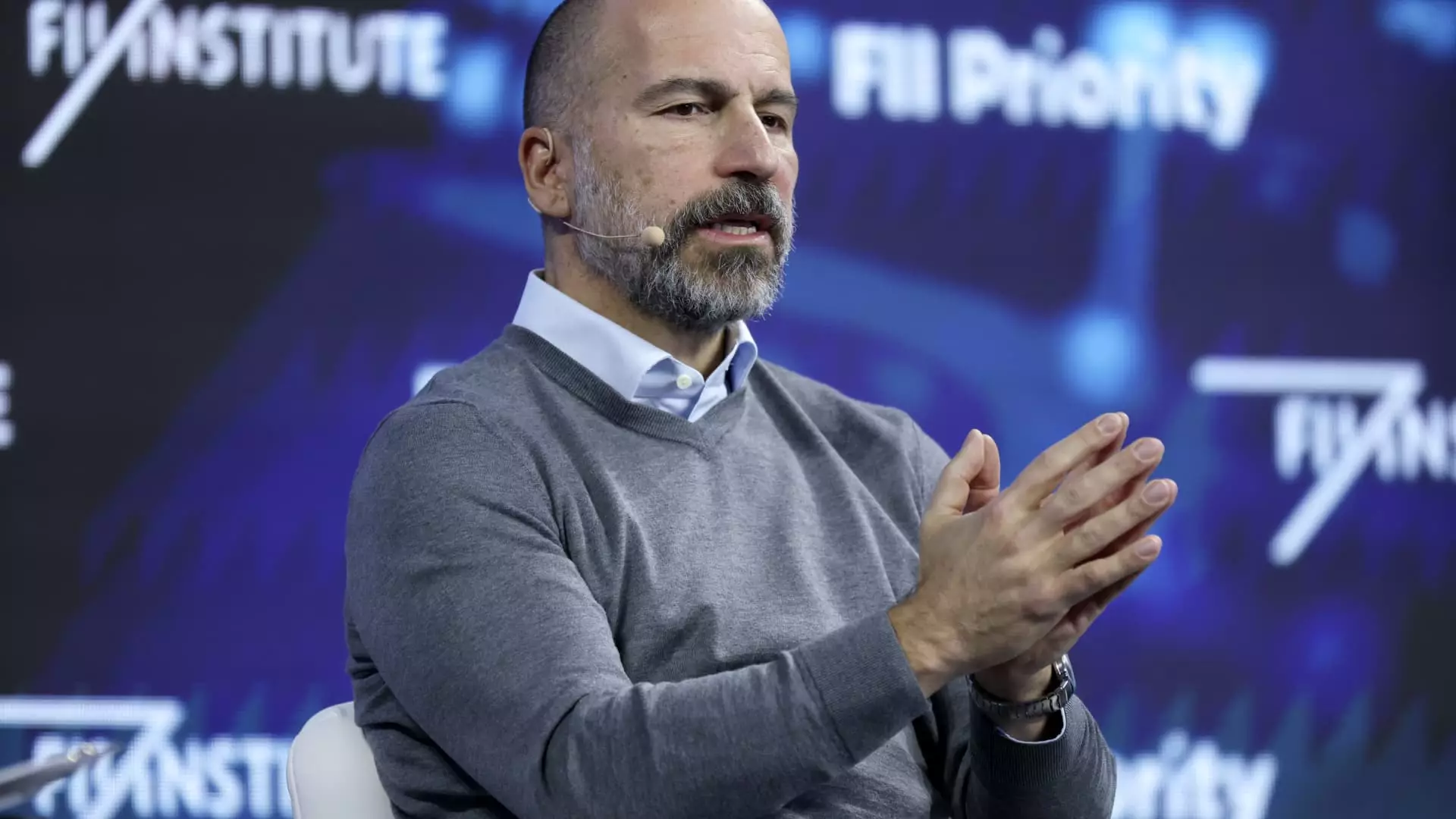Uber, the ride-hailing behemoth, recently showcased a mix of triumph and turbulence in its first-quarter financial report for 2025. While the company managed to outperform analysts’ expectations in terms of earnings, it fell short in revenue, leading to a notable 5% drop in its stock price. This divergence highlights the complex landscape in which Uber operates, evidencing that despite positive earnings per share (EPS), expectations set by market analysts can lead to market volatility.
Dissecting Financial Outcomes
Uber reported an EPS of 83 cents, well above the anticipated 50 cents. However, its revenue of $11.53 billion only slightly edged past 2024’s figure of $10.13 billion and did not meet the estimated $11.62 billion. This 14% revenue growth year-on-year is impressive in isolation but raises questions about the scalability and sustainability required to meet the ever-evolving demands of investors. The fact that net income has transitioned remarkably into a positive $1.78 billion from a loss of $654 million last year suggests operational progress. However, this leads one to wonder whether such sharp improvements can continue and whether they mask deeper concerns within the underlying business model.
Booking Trends and Consumer Engagement
Breaking down the revenue sources reveals a more nuanced view. Uber’s mobility segment reported gross bookings of $21.18 billion—a robust 13% year-on-year increase—while the delivery segment, encompassing Uber Eats, grew at an even healthier 15% to $20.38 billion. The number of monthly active platform consumers has swelled to 170 million, representing a solid increase of 14% compared to the previous year. These numbers indicate that Uber’s core offerings remain attractive to consumers, yet one cannot dismiss the growing competitive pressures in both ride-hailing and food delivery services.
Moreover, users generated a remarkable 3.04 billion bookings during the quarter, up 18% from the previous year. Such statistics paint a picture of a thriving marketplace; however, they also imply the necessity for Uber to continuously innovate to keep ahead of rivals like Lyft and DoorDash, who are vying for market share in this competitive ecosystem.
The FTC’s Shadow and Internal Policy Shifts
Outside of mere numbers, Uber faces significant scrutiny from various quarters, most notably the Federal Trade Commission (FTC), which recently initiated legal action against the company. The lawsuit alleges “deceptive billing and cancellation practices” surrounding Uber One, the subscription service garnering 60% of gross bookings in the delivery segment. This raises crucial questions about customer transparency and trust. Khosrowshahi’s assertion that the process is simple begs the larger question: why the negative perceptions persist? Direct user experiences contradicting this claim could emerge as a critical focus in consumer retention and trust-building strategies.
Additionally, internal changes within the organization could further complicate matters. The decision to require employees to work three days a week in the office underscores a shift towards greater in-person collaboration, noted for its potential positive effects on creativity and teamwork. Yet, this policy fails to consider the evolving preferences for workplace flexibility, especially after an extended period of remote work. This could lead to employee dissatisfaction and impact productivity if not managed judiciously.
Autonomous Aspirations: The Future Earnings Arena
Another facet of Uber’s report that warrants attention is its aggressive pursuit of autonomous vehicle technology—an ambitious expansion into what Khosrowshahi calls “the single greatest opportunity ahead for Uber.” With a current run-rate of 1.5 million autonomous trips and partnerships with industry players like Waymo and Volkswagen, Uber’s move towards robotics in transportation seems promising. The successful launch of robotaxi services in Austin, surpassing previous expectations, exemplifies the potential for future disruption. However, reliance on technology also carries inherent risks, especially regarding public acceptance and regulatory landscapes.
Uber must navigate these choppy waters carefully. The company’s foray into autonomous services could redefine the ride-hailing experience, but any missteps here could also lead to substantial financial liabilities and reputational damage. Balancing rapid technological advancement with operational reliability will be key to sustaining consumer trust and investor interest.
While Uber showcases resilience through improved financial metrics and innovative progression, it is clear that the path ahead is equally fraught with challenges. The financial community remains skeptical, and with rising competition and legal hurdles constantly at its heels, how Uber recalibrates its strategies will be pivotal in determining its future trajectory.


Leave a Reply